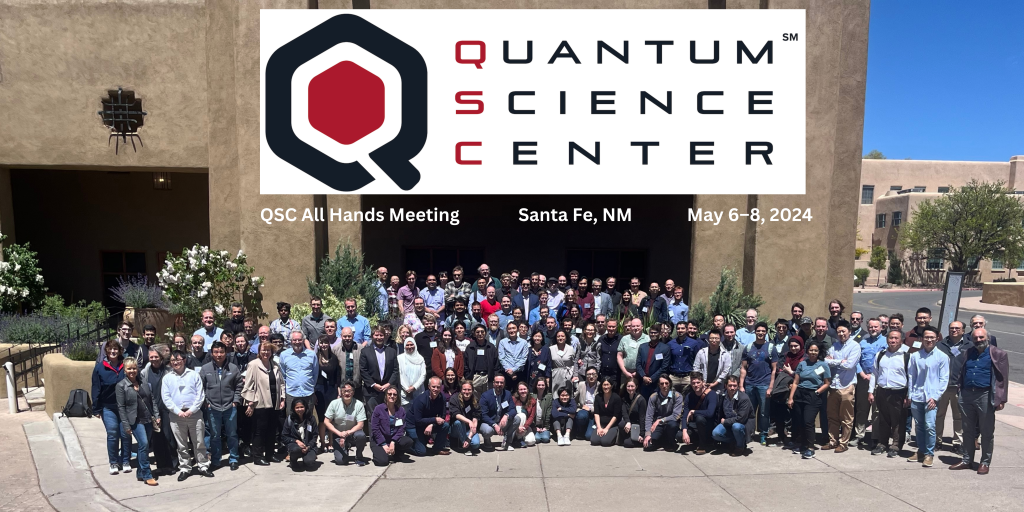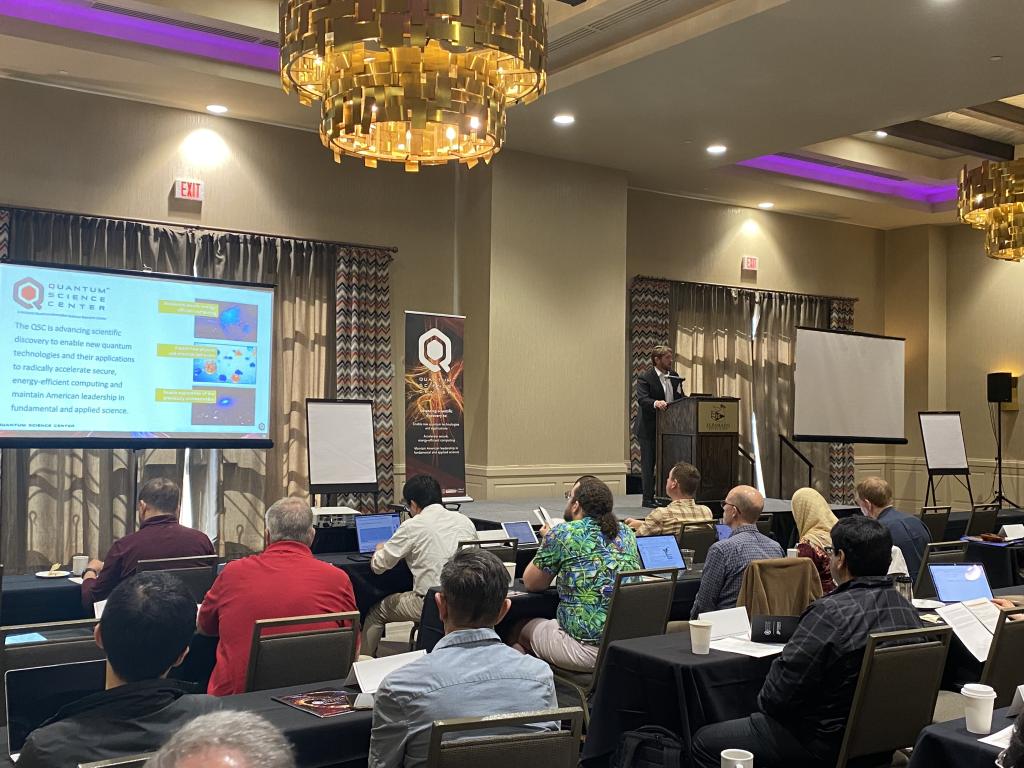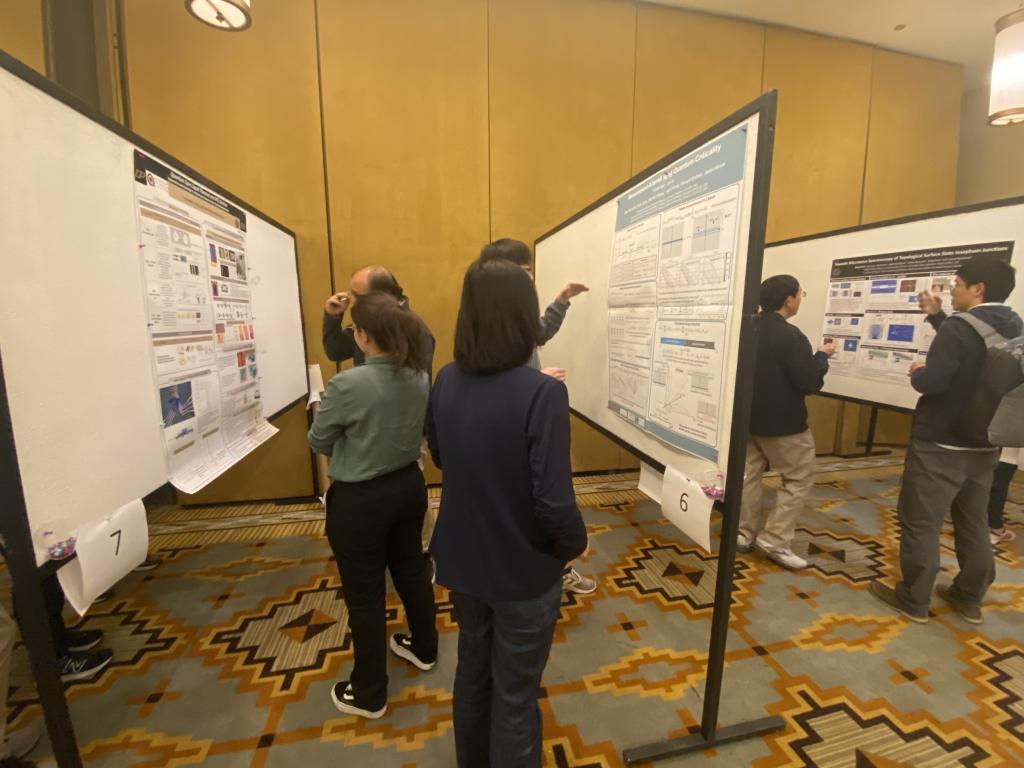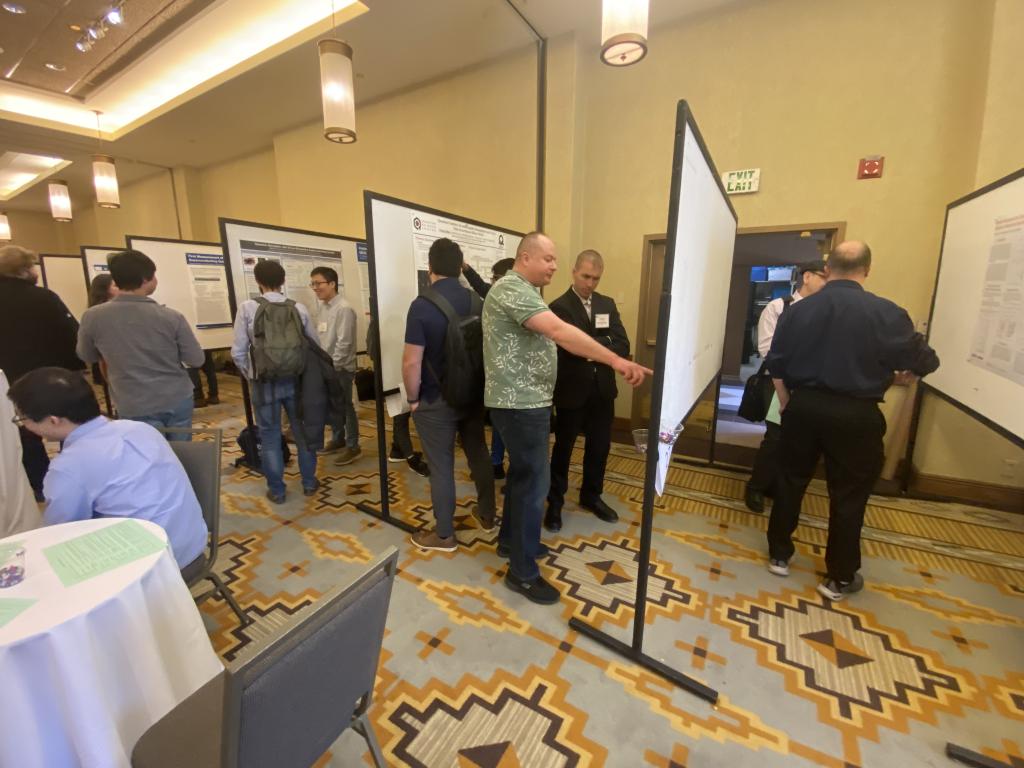
Close on the heels of its fourth summer school, the Quantum Science Center, or QSC, hosted its second in-person all-hands meeting in early May.
Located less than an hour away from Los Alamos National Laboratory, one of the QSC's founding institutions, the Eldorado Hotel in Santa Fe, New Mexico hosted about half of the center's total membership. More than 150 scientists, engineers and support staff traveled from 17 institutions - including national laboratories, universities and industry partners - to review the QSC's progress, examine existing priorities and brainstorm new short- and long-term research endeavors.
As director of the QSC - a Department of Energy National Quantum Information Science Research Center headquartered at DOE's Oak Ridge National Laboratory - Travis Humble presented an overview of the center to kick off the event. Crosscutting projects, he said, represent one key area ripe for expansion. Although there are already 27 projects that involve constant collaboration across the center's partner institutions, Humble hopes connections made at this year's meeting will yield even more multidisciplinary partnerships across the center's three research thrusts.
"Great minds think alike, and we must ensure that great minds are also thinking together," Humble said.

Throughout the three-day meeting, each day featured a plenary session to set the tone and pose charge questions. To adjust project goals and milestones as needed, these sessions were followed by breakout sessions in which smaller groups discussed the topical priorities of phenomena in quantum materials, quantum simulations and quantum sensing in extreme environments.
Working lunches featured updates from the center's workforce development and communications leads as well as presentations from the 2023 recipients of the center's Quantum Postdoctoral Research Award, including Johnson Lu of ORNL, Dylan Temples of Fermi National Accelerator Laboratory and Vahagn Mkhitaryan of Purdue University. Each year, this award provides early-career researchers with additional funds to pursue a research topic aligned with their interests and center goals.
Having reflected on milestones reached and obstacles overcome in the past four years, participants provided input to the center's plan for its fifth year of operation funded under the original DOE award received in 2020. QSC leadership also gathered input from members on emerging scientific challenges and high-impact research areas in preparation for the center's pending renewal.
During her remarks, the QSC's Deputy Director Vivien Zapf concluded that any single quantum technology is unlikely to dominate the entire ecosystem, making it worthwhile to facilitate technology transfer agreements for a variety of specialized tools.
"An optimal combination is a mix of conventional and unconventional approaches," Zapf said. "We do not want to be fully siloed in one area. The reason the QSC exists is to pursue a more diverse approach."

Another recurring topic was the need to expand the center's contributions on a national and international scale while continuing to demonstrate success in unique scientific and technical efforts, a key concern for QSC Chief Scientist Joel Moore. According to Moore, one of the most high-profile areas for discovery involves testing current quantum systems to prove the viability of the full-scale quantum computers of the future.
"Other models of ultrapowerful computation usually lose their extra power as soon as errors occur, but quantum computers can tolerate errors up to some threshold due to clever error correction approaches," Moore said.
For example, such fault-tolerant quantum hardware will benefit from conducting experiments underground, which is now possible due to the QUIET and LOUD facilities located at Fermilab, another founding member of the QSC. These experiments can provide unique insights into the noise and errors that arise from atmospheric sources of radiation.

Student activities included a social event led by the QSC Postdoctoral and Graduate Research Association, or PGA, in which outgoing PGA chair Morris Yang of Purdue passed his leadership responsibilities to Fermilab's Ryan Linehan. The all-hands meeting also featured a poster session sponsored by Microsoft. A panel of judges selected five winners from the 37 poster presentations: Meena Gowrishankar of ORNL, Marc Illa Subina of the University of Washington, Grace Bratrud of Northwestern University, Jack Villanova of ORNL and Mingi Kim of Purdue.
Meeting attendees represented four national laboratories (Fermilab, LANL, ORNL, and Pacific Northwest National Laboratory), four companies (EPRI, IBM, Infleqtion, and Microsoft), and nine universities (California Institute of Technology; UC Berkeley; UCLA; UC Santa Barbara; Illinois Institute of Technology; Northwestern; Purdue; University of Tennessee, Knoxville; and UW).
The QSC, a DOE National Quantum Information Science Research Center headquartered at ORNL, performs cutting-edge research by harnessing unique resources and a wide variety of expertise from national laboratories, universities, and industry partners. QSC researchers are designing materials that enable topological quantum computing; implementing new quantum sensors to characterize topological states and detect dark matter; and designing quantum algorithms and simulations to provide a greater understanding of quantum materials, chemistry, and quantum field theories. These efforts position the center to advance scientific discovery and enable new quantum technologies and applications that will radically accelerate secure, energy-efficient computing and maintain US leadership in fundamental and applied science. For more information, visit https://qscience.org.
UT-Battelle manages ORNL for DOE's Office of Science, the single largest supporter of basic research in the physical sciences in the United States. DOE's Office of Science is working to address some of the most pressing challenges of our time. For more information, visit https://energy.gov/science. - Elizabeth Rosenthal






